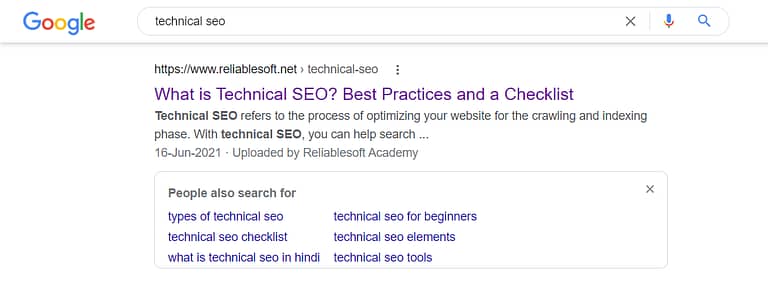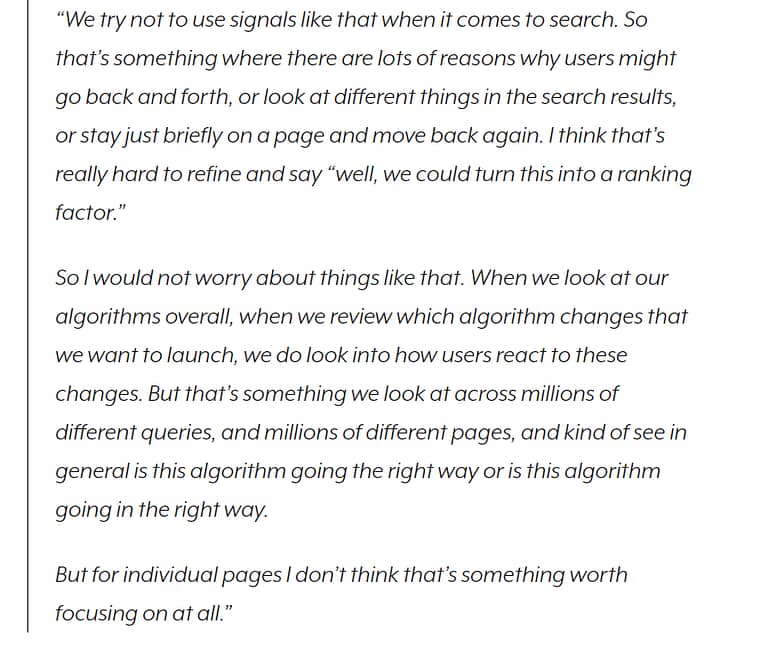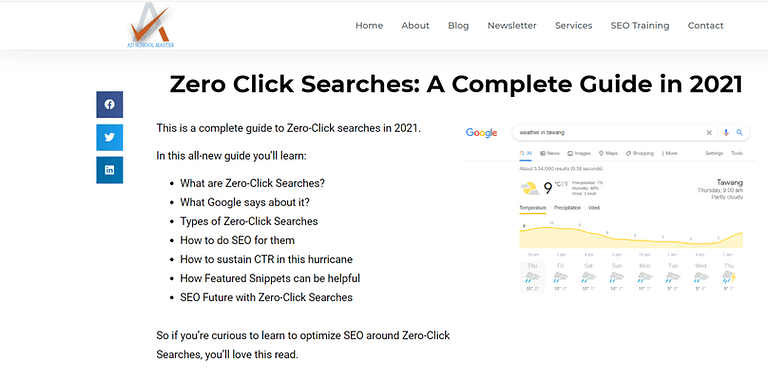What is Pogo Sticking?
<< Bounce Rate
What is Pogo Sticking?
Pogo sticking is a type of user behavior when they visit various pages from the search engine results page on a certain query.
For example, you made a search on Google, clicked on the first page, went through it a little, and pressed the back button to look for some other page.
This is known as “pogo sticking.”
Pogo = coming back and forth
+
Sticking = time for which you are on the page
To lessen this, Google has come up with the “People also search for” option right after you leave a certain page. It comes below the result you just left.

Google tries to solve your problem by giving a variation of a search query for you to discover more pages, instead of going through pages around the search result you just got back from.
Why does Pogo sticking matter?
If a top-ranking page is pogo sticked often, Google will think that people are seemingly not liking its content and consequently, it will lower down its ranking.
That said, Pogo Sticking is not a direct ranking factor.
As per John Mueller,

When do people leave your page and explore more options?
Obviously when they don’t find your content good enough.
But is content the only reason?
There can be many other factors around user experience like:
- Content not matching the title and meta description of your page.
- Too many pop-ups or redirects.
- A slow-loading website.
- Poor website design.
- Videos put on autoplay.
But in any of the cases, the site’s performance is getting impacted causing users to pogo stick.
Though there can be very neutral reasons like, a user just wants to explore more pages to have an overall opinion on a topic. This doesn’t mean they didn’t like your page in particular.
Or,
Your page wasn’t matching his search query and they made a change in their query.
So, there is no clear reason as to why a user will jump from one page to another.
In any case, you should not have a high pogo sticking rate.
Practices To Prevent Pogo Sticking:
Creating internal links:
All the pages on your site should be well linked to each other.
This will help users to navigate your website and discover more content which will lead to an increase in time spent.
The link should be present in the main body of the page and not at the bottom. For instance, a link in the introduction has more chances of being clicked than the one in the footer.
Also, internal links give add-on information on that topic.
Think about it!
It’s not possible to explain A – Z about every topic on one page.
A user is almost leaving your page but sees a link to another page, he may want to discover more about that topic.
Like:

The blog discusses various yoga techniques.
They have a link ‘yoga’ for those who want to first know the basics.
Then they have also included links to pages talking about meditation and breathing techniques.
Keep a font check:
Most people skim through your content and font size and color affect the readability of your content.
Backlinko claims that it uses 16px font:

Write short sentences and split a heavy paragraph into smaller parts.
The font of headings and subheadings should be consistent throughout the page.
There’s also a study by SEO blog on font sizes and colors.
Table of contents:
People want all the information instantly.
Too much text, in the beginning, can scare users and they might pogo stick.
A table of contents helps them understand what all is covered in your content.
I too used it for a blog on “keyword research”:

Updating old content:
If you remember I discussed it under crawl rate too.
Just like how crawlers like updated content, users like it too.
It leaves an impression that the page is the latest form and can be relied on.
I too keep doing it for my blogs:

In-depth guides:
Try to cover as much as you can about your topic.
Google also likes to rank lengthy content.
Titles like: in-depth guide, step-by-step guide, a guide for beginners are always preferred.
I wrote a blog on zero click searches and titled it as:

Reduce the bounce rate:
Confused between pogo sticking and bounce rate?
Let me explain it to you.
Bounce rate is the percentage of people leaving your site without taking any action or visiting any page further.
Pogo sticking is when people visit one page after the other without staying long on any particular page.
In pogo sticking, a user doesn’t spend more than 4- 5 seconds on a particular page.
In bounce rate, you may spend even hours on a particular page.
Pogo sticking is with respect to the SERP, as you move from one page to another from the results page.
Bounce rate only happens with respect to an individual page.
In pogo sticking, a user is unsatisfied with your content which makes them explore more options.
While in bounce rate, the user may or may not be satisfied with your content.
But they have a common chord too!
Bounce rate can lead to pogo sticking.
When a user bounces back from your site, they are probably going to click on another result from the results page.
This is exactly what we call “pogo sticking.”
Therefore, a high bounce rate will lead to more users pogo sticking too.
In order to check which pages have chances of pogo sticking, firstly check their bounce rates.
To check the bounce rate, go to : behavior > site content > landing pages

Then, set the segment as “organic traffic.”

From here, you can identify the pages that have higher than the average bounce rate for your website.
To reduce the bounce rate, follow these tips:
- Improve the site speed
- Write compelling content
- Improve your site structure
- Improve internal linking
- Improve the visual effects (videos, images, infographics)
Match the user intent:
User intent is used to describe the purpose of a user making that search.
It is natural that if you don’t understand that, you won’t be able to answer their queries.
Let’s understand it with an example:
If you want to buy cookies, you will search for “bakery shop near me” but if you want to bake cookies, you will search for “cookies recipe”.
For both the queries, there will be different pages ranking.
Therefore, your content should match the user’s intent.
This is the reason why you should always go through pages that already rank on a keyword.
That is the type of content that people seek.
For example:
If you search for “zero click searches”, most of the blogs are complete guides.
So, we also came up with a complete guide on the same topic and as it turns out, it ranks on page 1 of Google.

FAQs:
When you include FAQs in your blog post, people will find it more engaging.
This is the reason why you should always go through forums before writing on a topic.
You can see what questions and discussions people have and answer them via your content.
Previous
Next
<< SEO Basics
SEO vs. SEM >>

